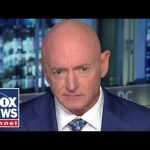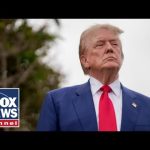**Protecting the President: A Close Call for Security**
In a shocking turn of events, a recent incident at a former president’s public event has raised serious concerns about the security protocols in place for our nation’s leaders. This close call left many wondering how a gunman managed to get so near, causing panic and fear among the crowd. A former Secret Service agent, Frank Loveridge, emphasized the professionalism of the agents on the advance team, but also pointed out that such a situation should never have occurred in the first place. After all, when it comes to the safety of a former president, only the highest standards should apply.
Loveridge, who spent over two decades in the Secret Service, called attention to the critical moment when an agent spotted a gunman’s muzzle peeking through a fence, hidden amongst the bushes. It was a hair’s breadth away from disaster, a situation that no one wants to imagine. In a world where political tensions run high, the last thing anyone expects is for a former president to be put in jeopardy. But the need for enhanced security continues to be a pressing issue, especially after this near-miss. It’s clear that if someone is determined to cause harm, the existing measures need to be solid enough to deter them.
Moving beyond this incident, the discussion has turned to what could have been done differently. Loveridge highlighted that securing a perimeter is not only a fundamental principle of protective detail but also a crucial strategy to prevent such close encounters with danger. Authorities must expand their safety zones and ensure that every inch of an area is swept clean of potential threats before any event begins. A rigorous examination of surrounding locations and the people involved must occur to create a fortified zone around the former president – this is no time to cut corners.
Loveridge also pointed out that local law enforcement should be more involved, ensuring they can enforce proper measures when securing an event. The responsibility should not fall solely on the Secret Service; collaboration between agencies is vital. If local police can help identify hiding spots for potential threats, it will enhance the overall security framework. Engaging all hands on deck – from local police to specialized canine units – can make a considerable difference. Continually checking and rechecking the surrounding areas might sound tedious, but the stakes are undeniably high.
In light of these events, many have raised awareness about the threats that political figures, particularly former President Trump, currently face. With recent attempts on his life and alarming chatter about foreign threats, the call for a reassessment of security assets is not just recommended – it is warranted. National security is a shared responsibility, one that compels officials to step up and ensure that measures are not only in place but are effective. As political violence remains a substantial concern, the urgency to provide adequate protection for those in the limelight cannot be overemphasized.
In conclusion, the security of public officials needs to be viewed with heightened seriousness, particularly after such harrowing events. The incident serves as a wake-up call about what could happen if complacency sets in. By revisiting and reinforcing security protocols and fostering cooperation among different agencies, the hope is that former presidents and all political figures can participate in public life without the looming specter of danger. It is a collective effort that demands vigilance, due diligence, and an unwavering commitment to safety. After all, when it comes to protecting democracy, every moment and every measure counts.




